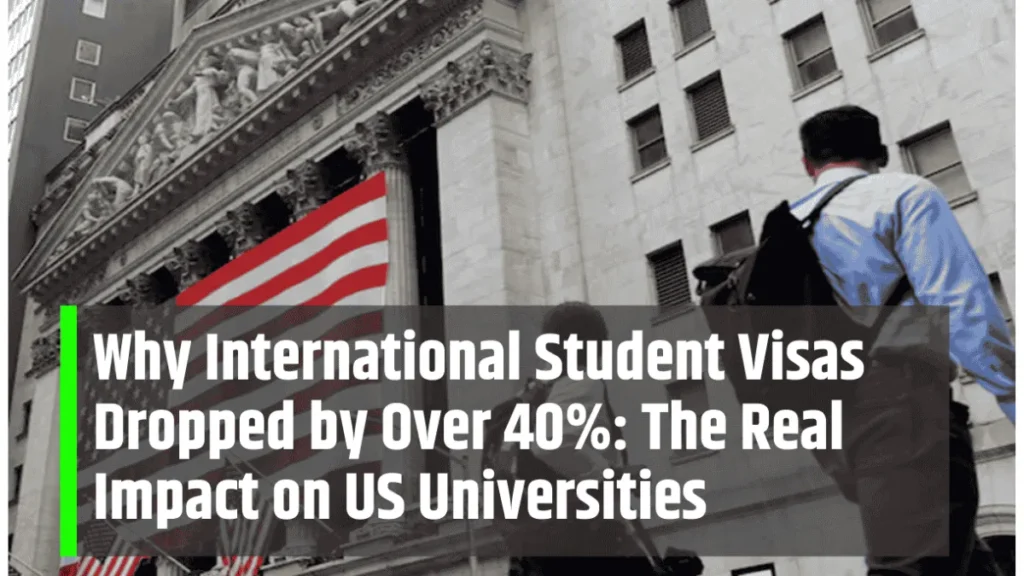International student visas dropped long been a vital part of the U.S. education system, contributing not only to campus diversity but also billions in tuition revenue. But fresh data shows a staggering 40% decline in new student visas, sparking alarm across universities and policymakers alike.
Why Student Visas Are Declining
Experts point to several reasons behind the steep drop. Stricter visa screening, longer processing times, and heightened background checks have discouraged many applicants. In addition, political tensions, safety concerns, and growing competition from countries like Canada, the U.K., and Australia have shifted student preferences away from the U.S. Rising tuition costs and stricter work restrictions after graduation are also weighing heavily on student decisions.
The Financial Shock to U.S. Universities
Universities that rely on international students for higher tuition rates are facing an unprecedented financial crunch. A decline of over 40% translates to billions in lost revenue, especially for mid-sized and state-funded institutions. Admissions officers worry that fewer international enrollments could lead to program cuts, staff reductions, and declining global rankings.
The Broader Impact on Campus Life
Beyond the financial side, the cultural and academic experience on campuses is also being reshaped. International students bring unique perspectives, research contributions, and global connections that enrich learning. A sharp decline means fewer diverse voices in classrooms and fewer international collaborations, which could reduce the U.S.’s academic edge in a globalized world.
Policy and Political Implications
The drop comes at a time when U.S. leaders are debating immigration, national security, and education policy. While stricter rules are meant to prevent misuse of student visas, critics warn that overregulation risks making the U.S. a less attractive destination. Universities are lobbying Washington to balance national security with maintaining America’s reputation as the world’s top higher education hub.
Conclusion: The 40% fall in international student visas is more than a number—it’s a shift that could permanently change U.S. higher education. With universities under pressure and global competition heating up, the challenge lies in finding a balance between security and accessibility.
Disclaimer: This article is for informational purposes only and should not be considered legal, immigration, or financial advice. Students should consult official government resources and university international offices before making decisions.
Read More:
- Public Service Loan Forgiveness Program Changes: How the Dept. of Education Is Tightening Rules for PSLF
- US Revokes Over 6,000 Student Visas: Inside the State Department’s Crackdown on Criminal and Terrorism Links
- $1,702 Stimulus Payment September 2025: The Truth for Seniors and Full Social Security Schedule
- Case Study: How Trump Era Policies Are Impacting Unexpected U.S. University Campuses
- Bill Ackman Backs AI-Driven Alpha School: Could Two Hours of Digital Tutoring Replace the Classroom?






